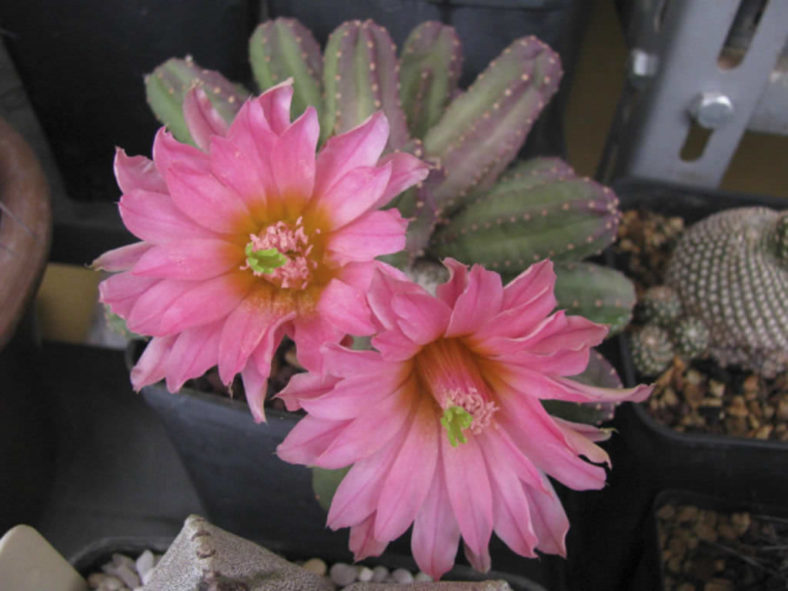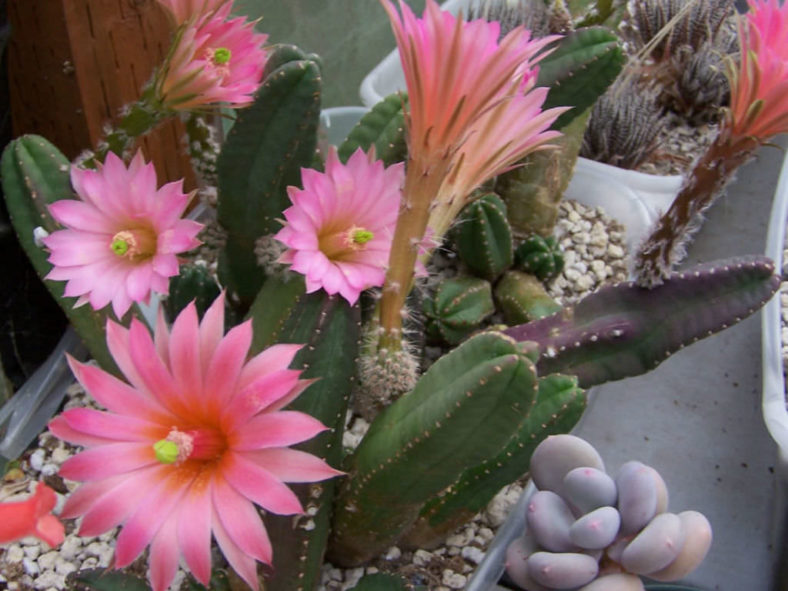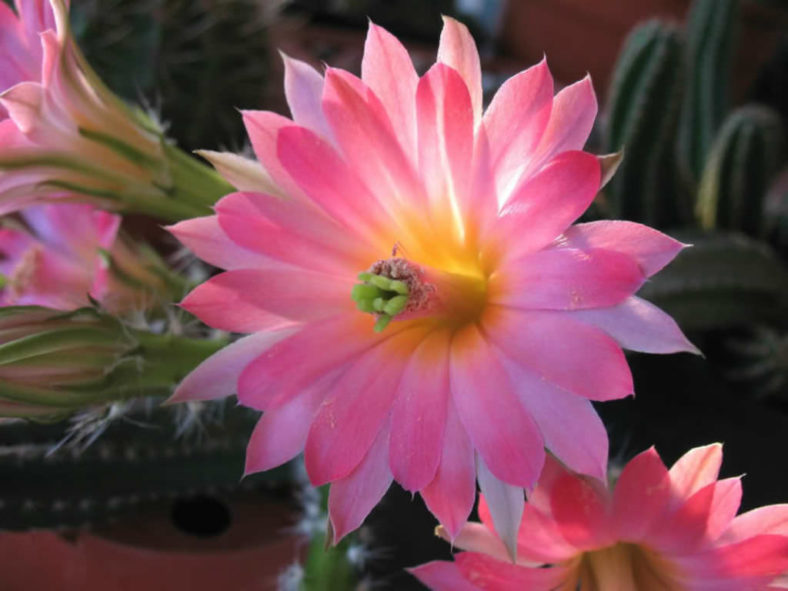Scientific Name
Echinocereus scheeri subsp .gentryi (Clover) N.P. Taylor
Synonym(s)
Echinocereus gentryi, Echinocereus scheeri var. gentryi, Echinocereus cucumis
Scientific Classification
Family: Cactaceae
Subfamily: Cactoideae
Tribe: Pachycereeae
Genus: Echinocereus
Etymology
The subspecific epithet "gentryi" (pronounced "JEN-tree-eye") honors Howard Scott Gentry (1903-1993), an American botanist recognized as the world's leading authority on Agaves.
Origin
Echinocereus scheeri subsp. gentryi is native to Mexico.
Description
Echinocereus scheeri subsp. gentryi is a branching cactus with cylindrical stems that have 4 to 5 ribs lined with clusters of very short spines, which can sometimes be absent. The stems typically grow between 16 and 24 inches (40 and 60 cm) in length, although they can occasionally reach up to 3.3 feet (1 meter) in length.
The showy flowers are pale pink, trumpet-shaped, and can reach up to 5.6 inches (14 cm) in length. They appear in spring and remain fully open for most of the day and night. The bright green fruits with white pulp and black seeds can grow up to 0.8 inches (2 cm) long.

Cultivars of Echinocereus scheeri subsp. gentryi
How to Grow and Care for Echinocereus scheeri subsp. gentryi
Hardiness: USDA hardiness zones 9b to 11b: from 25°F (-3.9°C) to 50°F (10°C).
If you can grow other globular cacti, you can most likely grow Echinocereus well. One of the key factors in success with these is avoiding any hint of wet soil. Because their root systems are weak, they are particularly susceptible to root rot, which can eventually kill your plant. Otherwise, they thrive on a program of intense, bright light, slight water, and a steady diet of light fertilizer. These cacti are vulnerable to mealybugs and aphids.
Echinocereus are slow-growing cacti that typically require repotting every other year or so. You can prolong the time to repotting by removing plantlets and potting them up in their own pots. When repotting a cactus, remove it from its pot and remove any clumped soil. These plants tend to have shallow root systems, so avoid damaging their roots.
Learn more in "How to Grow and Care for Echinocereus."
Links
- Back to genus Echinocereus
- Succupedia: Browse succulents by Scientific Name, Common Name, Genus, Family, USDA Hardiness Zone, Origin, or cacti by Genus
Photo Gallery
Click on a photo to see a larger version.


